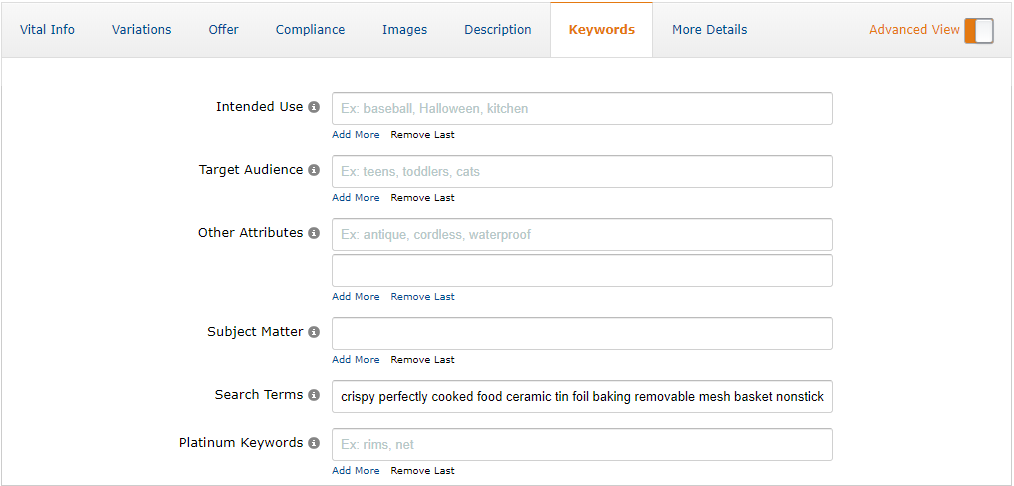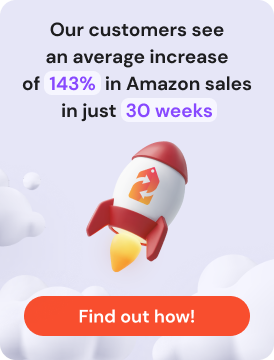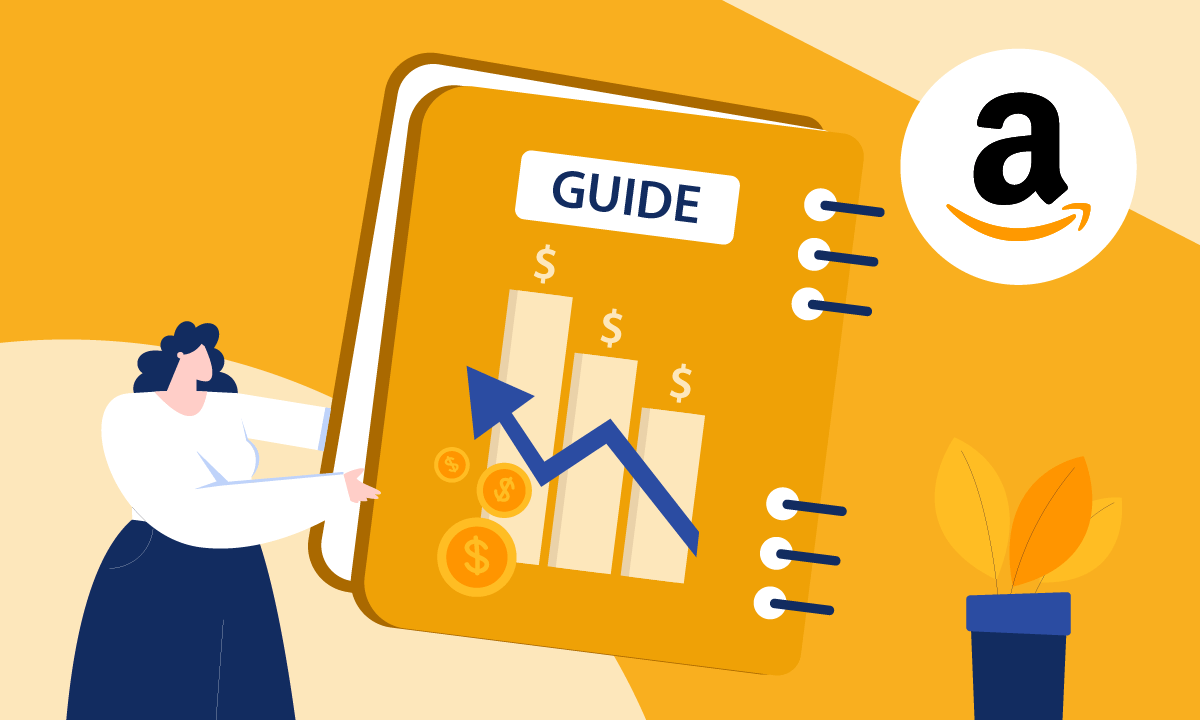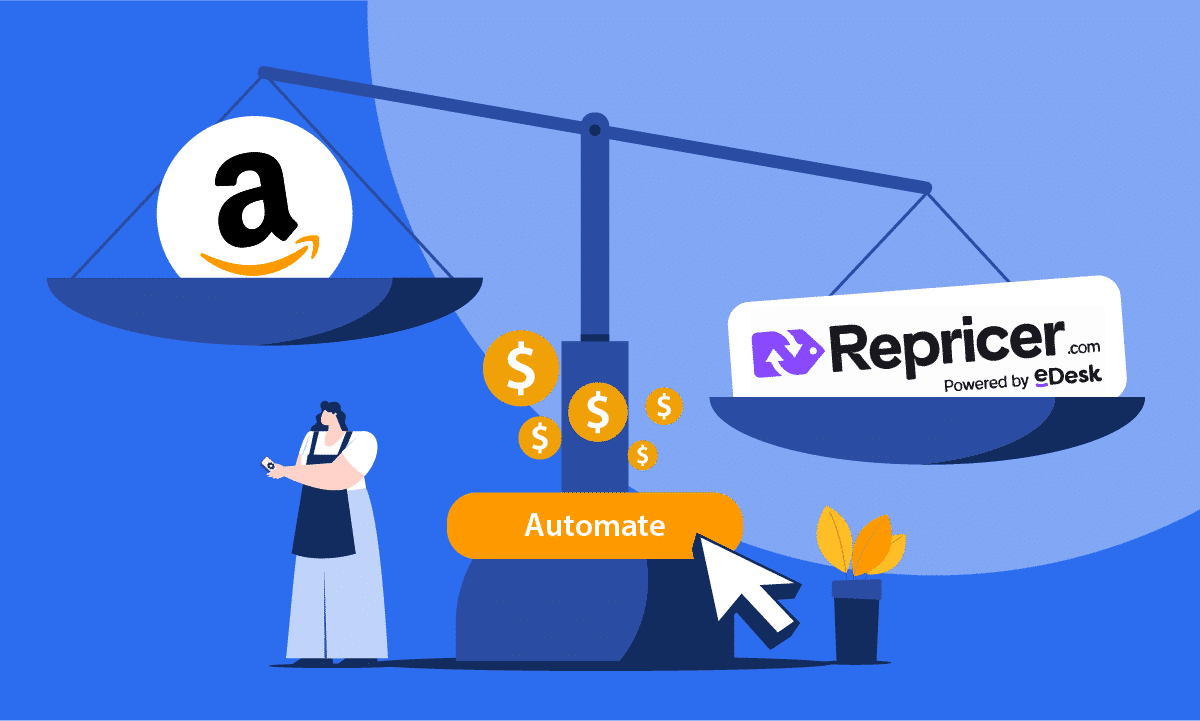When you’re selling online, the most important piece of the puzzle is getting your product in front of the right audience. You need to make sure your product is seen when customers search for it and Amazon keyword research is crucial to achieving this.
Aside from the fierce competition to win the Amazon Buy Box, sellers need to ensure their products are ranking for the right searches. This makes Amazon keyword research one of the most important things that a seller does. If you can find a large selection of relevant keywords that strike the balance between traffic and competition, then the better your visibility will be.
In fact, getting your Amazon keyword research right is one of the simplest ways to increase your sales, without having to compete on price or source new products.
Understanding Amazon’s A9 algorithm
Before you start undertaking your Amazon keyword research, it’s important to understand why you are doing it. That reason is to please Amazon’s A9 algorithm which decides the order of search results on the marketplace.
Jeff Bezos says that he wants Amazon to be the most customer-centric organization in the world. In order to provide a great experience for users of the marketplace, he needs to ensure that the right products are popping up when someone makes a search. That’s where the algorithm comes in.
The Amazon A9 algorithm takes many factors into account, including;
- The number of shoppers that add your product to their cart after searching for a keyword
- The number of your positive ratings and reviews your product has received
- The ratio of units your product has sold per page visit
- The relevance of your product based on product title, product image, keywords and description
To make sure that you’re ticking the box for relevancy, you need to have your finger on the pulse and know which keywords are popular with your customers. But how do you make sure that your Amazon keyword research achieves this?
There are four steps that you need to follow:
- Find your seed keywords
- Generate a wider list of keywords
- Insert the keywords into your Amazon listings
- Keep updating your keywords
Related: Amazon A10 Algorithm – Everything You Wanted To Know
1. Find your seed keywords
Sellers need to start by generating four or five seed keywords. These are terms, usually made up of one or two words, that really describe what your product actually is. So, for example, if your product was an apple corer, that term would be your first seed keyword. You would then also have “apple slicer,” “apple cutter” and “fruit slicer.”
To research your seed Amazon keywords, start by having a good think about your product. If you had to describe it to someone in just two or three words, what would you say? If you were a customer browsing for your product, what would you search for? Note these thoughts down.
As a sense check, it is always worth looking at the five best selling products for your primary seed keyword. Continuing with the example above, you would take the top five ranking products for “apple corer” and carry out a reverse ASIN lookup. This will show the keywords that it’s currently ranking for on Amazon. There are a number of tools that you can use to do this including:
- AMZDataStudio
- Sonar
- Helium 10
- Keyword Inspector
You can then compare the results to your listing of seed keywords, making sure that they are both relevant and receive a good level of traffic. You may also find others which you hadn’t thought of which can then be added to your list of seed keywords.

2. Generate a wider list of Amazon keywords
Once you’ve established your seed keywords, it’s time to build out a wider list by finding related terms. There are a few techniques that you can use to do this.
Research keywords with Amazon’s suggested searches
One way to generate more keywords is to type your initial seed keywords into Amazon’s search box. As you can see in the example below, by searching apple corer, I’ve now got a further nine terms that buyers could be using to find my product. Repeat this for all of your initial keywords and note down each of the terms that Amazon suggests.
While in theory, you could insert these terms straight into your Amazon listing, it’s important to get some more data on them first. Even though we know that these terms are being searched for, we don’t know anything about the traffic they receive or how many listings are currently ranking for that term. To get this kind of information, sellers need to use an Amazon keyword research tool.
Use Amazon keyword research tools
Whether you’ve just got your initial seed keywords or a list of terms that you’ve generated from Amazon search results, keyword suggestion tools play a crucial role.
Firstly, they will automatically generate a long list of terms that are relevant to your seed keywords. However, this is not always very helpful unless it is accompanied by a strong set of data. Ideally, you need to be looking for a tool that provides you with an estimate for search traffic and an indication of how hard it would be to rank on page one for that term.
By running all of your terms through a keyword suggestion tool, you can start prioritizing them. You need to make sure that you’re noting down keywords with:
- High traffic but high competition
- High traffic but moderate or low competition
- Medium traffic but low competition
These are the terms that you want to be taking forward and thinking about adding to your Amazon listing.
It is also important to note that misspellings with a good amount of traffic shouldn’t be dismissed. These can be added to your backend keywords which buyers don’t see.
If you’re looking to choose a keyword tool, there are a vast number of free and paid tools on the market.
Some of the tools worth checking out are:
- AMZDataStudio
- MerchantWords
- Helium 10
- Sonar
- Scientific Seller
- Keywordtool.io
3. Insert the keywords into your Amazon listings
When you’ve whittled down your list using the three categories mentioned above, it’s time to put them in your Amazon listings. There are three key areas to target:
Researching keywords for your Amazon product titles
The first part of your listing to optimize is the product title. On Amazon, these have an upper limit of 200 characters, with some categories having even less. Because of this, it’s important to include only the most relevant search terms.

The information that Amazon suggests merchants include is the brand, size, color and the material or key feature. Try to keep to this formula and don’t be tempted to stuff keywords in—you don’t want to overdo it. Any keywords that you don’t use in the title can always be used in other parts of the listings.
Amazon keywords and your product description
Adding keywords to your Amazon product description and bullet points is a fine art. On one hand, both parts are indexed, so any keywords you add will help improve your search ranking. On the flip side, you don’t want to force your keywords in and dilute your brand message or confuse your customers.

It’s important to strike the balance between having a listing that ranks well in search but that also converts. So, if your listings aren’t receiving much traffic, but have a high conversion rate, it may be worth looking at the other areas of your listing first. Make minor adjustments to your product description and bullets if needed.
Backend keywords
Sellers sometimes forget about their backend keywords, but just because they are out of sight, doesn’t mean they should be out of mind. Backend keywords are not seen by customers but they are still indexed by Amazon and have a direct impact on your search ranking.
Accessed through the backend of Seller Central, merchants have five lines and 250 characters to add keywords that don’t appear anywhere else in their listing. It doesn’t matter what order the keywords are entered in and don’t be afraid to include misspellings. Customers won’t see them and there is debate over whether Amazon accounts for misspellings or not, so it’s probably best to err on the side of caution.

4. Keep researching new Amazon keywords
Amazon keyword research is not a one-time process. To achieve a consistently good search ranking, it needs to be repeated on a recurring basis. Keep putting your seed keywords and your competitors’ ASINs through keyword tools. This way you can spot any new, high traffic terms that people are using to find products like yours.
You also need to keep a close eye on your listings and see how they are performing in search. After you’ve made your initial changes, leave it a month and then compare it to your performance before you optimize your listings. If your search ranking has improved, then there’s no need to make any further changes.
Don’t be afraid to change things up. Go back through the process, see if you’ve missed any crucial keywords and make changes to your listing. Then, give it a month and see if that’s made any difference. If not, repeat the process again until you see an improvement.
Do keep in mind though, that it could be down to other factors which the algorithm is thought to consider. So, don’t forget to look at areas like your metrics in conjunction with carrying out Amazon keyword research.
The bottom line on keyword research for Amazon
When you’re selling on Amazon, the last thing you want to do is spend hours sourcing products to then create listings which your ideal customers can’t find.
Getting your Amazon keyword research right helps you avoid this dilemma and drives more potential customers to your listings. If they convert well this should then translate into more sales too.
Finding the right keywords can seem like a daunting task at first. But, over time, you’ll learn what tools you like, which ones you don’t and the best ways to generate those all-important seed keywords. If you clearly define the process you use and repeat it on a regular basis it’ll become second nature and you’ll enjoy a consistently high organic search ranking.






